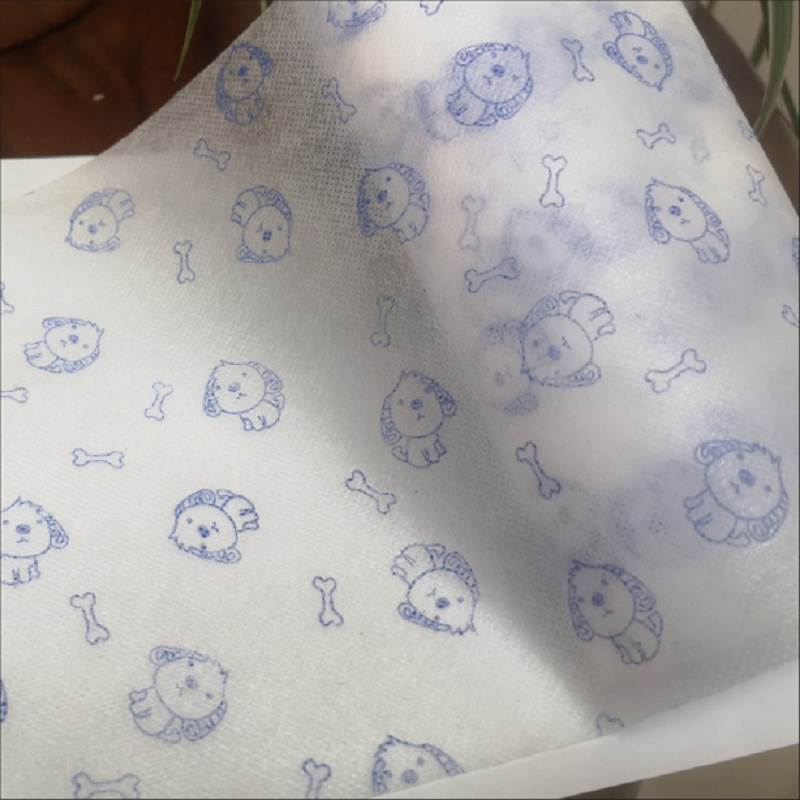プリント不織布, 繊維業界における革命的な素材, 多用途性と環境への優しさから絶大な人気を博しています. This innovative fabric is not only cost-effective but also offers a broad range of applications across various sectors, from medical supplies to fashion accessories. With advancements in printing technology, it now comes in a myriad of designs and colors, making it an attractive alternative to traditional woven textiles.
What is Printed Non Woven Fabric?
プリント不織布 refers to a type of material that is produced through a process that involves bonding or interlocking fibers together, as opposed to weaving or knitting them. This is achieved by using heat, 機械的, chemical, or solvent treatment. Once the non-woven fabric is formed, high-quality digital or screen printing techniques are employed to create vibrant, durable designs and patterns on its surface.

Versatility of Printed Non Woven Fabric
Printed nonwoven fabric offers versatility in terms of design, カスタマイズ, and application. It is a type of nonwoven material that has patterns, images, or colors printed onto its surface. The printing process can be done using various techniques such as screen printing, digital printing, or heat transfer printing. Here are some ways in which printed nonwoven fabric demonstrates its versatility:
- Decorative Applications: Printed nonwoven fabric is commonly used for decorative purposes. It can be found in home decor items such as tablecloths, カーテン, cushion covers, and wall hangings. The ability to print intricate designs and vibrant colors allows for endless possibilities in creating visually appealing and personalized decor.
- Apparel and Fashion: Printed nonwoven fabric is utilized in the fashion industry for clothing and fashion accessories. It can be seen in garments like dresses, skirts, shirts, and scarves, where the printed designs add uniqueness and style to the apparel.
- Promotional and Advertising Materials: Printed nonwoven fabric is popular for creating promotional and advertising materials such as tote bags, banners, flags, and exhibition displays. The fabric’s ability to showcase bold and eye-catching prints makes it an effective medium for brand promotion and marketing.
- Packaging and Branding: Printed nonwoven fabric is used in packaging applications, particularly for gift wraps, product packaging, and shopping bags. The printed designs and logos on the fabric can enhance the visual appeal of the packaged items and create a distinct brand identity.
- Craft and DIY Projects: Printed nonwoven fabric is favored by crafters and DIY enthusiasts due to its versatility. It can be easily cut, 形をした, and glued, making it suitable for a wide range of projects such as scrapbooking, card making, and fabric crafts.
- Event and Party Decorations: Printed nonwoven fabric is often used for event and party decorations like banners, backdrops, table covers, and chair sashes. The ability to print custom designs allows for creating themed decorations that match the event or party’s aesthetic.
- 医療とヘルスケア: Printed nonwoven fabric can also find application in the medical and healthcare industry. It can be used for items like surgical drapes, patient gowns, and medical disposables where the printed designs can help create a more pleasant and comforting environment for patients.
Eco-Friendly Attributes
One of the key benefits of printed non woven fabric is its environmental sustainability. Many non woven fabrics are made from recycled materials and are fully biodegradable or compostable. さらに, the production process typically consumes less energy and water compared to traditional woven fabric manufacturing. When disposed of responsibly, they contribute less to waste and pollution.
Printed non woven fabric has undeniably carved a niche for itself in the global market. Its ability to combine customization, 耐久性, and affordability makes it a game-changer in industries that demand practicality along with aesthetics. As sustainable practices gain traction worldwide, this versatile material is poised to continue revolutionizing sectors that utilize textiles. Future innovations in printing technologies promise even more exciting possibilities for printed non woven fabrics, enhancing their potential uses and minimizing their ecological footprint.